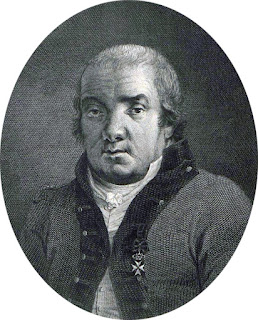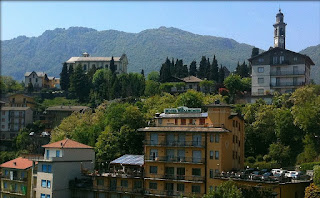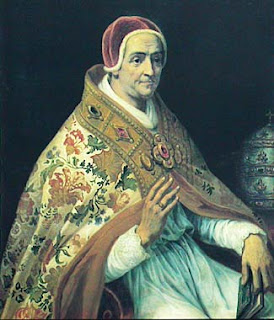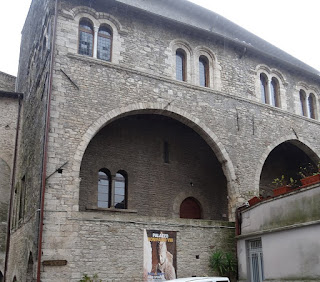Neoclassicist famous for his work in St Petersburg
 |
| Giacomo Quarenghi spent most of his working life in St Petersburg in Russia |
His extensive work in St Petersburg between 1782 and 1816, which followed an invitation from the Empress Catherine II (Catherine the Great), included the Hermitage Theatre, one of the first buildings in Russia in the Palladian style, the Bourse and the State Bank, St. George’s Hall in the Winter Palace, several bridges on the Neva river, and a number of academic buildings including the Academy of Sciences, on the University Embankment.
He was also responsible for the reconstruction of some buildings around Red Square in Moscow in neo-Palladian style.
Quarenghi’s simple yet imposing neoclassical buildings, which often featured an elegant central portico with pillars and pediment, are responsible for much of St Petersburg’s stately elegance.
As a young man, Quarenghi was allowed to study painting in Bergamo despite his parents’ hopes that he would follow for a career in law or the church. He travelled widely through Italy, staying in Vicenza, Verona, Mantua and Venice in the north and venturing south to make drawings of the Greek temples at Paestum before arriving in Rome in 1763. His first focus was on painting, but he was later introduced to architecture by Paolo Posi.
 |
| Quarenghi's building for the Academy of Sciences on the banks of the Neva river in St Petersburg |
His first major commission in Italy was for the internal reconstruction of the monastery of Santa Scholastica at Subiaco, just outside Rome, in 1771, where he was also asked to design a decor for a Music Room in the Campidoglio, and drew up designs for the tomb of Pope Clement XIII, which were later executed by Antonio Canova.
In 1779 he was selected by the Prussian-born Count Rieffenstein, who had been commissioned by Catherine II to send her two Italian architects. Quarenghi, then 35, was finding it hard to generate enough work amid fierce competition in Italy, so he accepted the offer without hesitation, leaving immediately for St Petersburg, taking his pregnant wife with him.
 |
| Quarenghi's English Palace at Peterhof, which was sadly demolished after suffering damage during the war |
In 1783 Quarenghi settled with his family in Tsarskoe Selo, the town which was the former seat of the Russian royal family, where he would supervise the construction of the Alexander Palace.
Soon afterwards, he was appointed Catherine II's court architect and went on to produce a large number of designs for the Empress, her successors and members of her court, as well as interior decorations and elaborate ornate gardens.
His work outside St Petersburg included a cathedral in Ukraine and among his buildings in Moscow were a theatre hall in the Ostankino Palace.
Quarenghi was less popular with Catherine II’s son and successor, the Emperor Paul, but enjoyed a resurgence under Alexander I. He returned to Italy from time to time and always to an enthusiastic welcome.
He retired in 1808 and remained in Russia, even though most of his 13 children by two wives chose to return to Italy.
Quarenghi was granted Russian nobility and the Order of St. Vladimir of the First Degree in 1814. He died in Saint Petersburg at the age of 72.
 |
| A view over the village of Rota d'Imagna in Lombardy |
Rota d’Imagna in the province of Bergamo is situated in the Imagna Valley, a popular tourist spot because of its largely unspoilt landscape and spectacular mountain views, with many visitors attracted to trekking, mountain walks and horse riding. In the village itself, the Church of Rota Fuori, dedicated to San Siro, which was built in 1496 and restructured in 1765, has art works of significance including by Gaetano Peverada, Pier Francesco Mazzucchelli and Carlo Ceresa. Quarenghi’s home was Ca’ Piatone, a palace built in the 17th century.
| The Hermitage Theatre has echoes of Palladio's Teatro Olimpico in Vicenza |
Quarenghi’s design for the Hermitage Theatre in St Petersburg, with its seating set out in the style of a Roman amphitheatre and the walls decorated with marble columns and recessed statues, was heavily influenced by his visit to the Teatro Olimpico in Vicenza as he toured Italy as a young man. The theatre, constructed between 1580 and 1585, was the final design by Andrea Palladio and was not completed until after his death. The trompe-l'œil onstage scenery, designed by Vincenzo Scamozzi, gives the appearance of long streets receding to a distant horizon. The theatre is one of only three Renaissance theatres still in existence.
More reading:
How Palladio became the world's favourite architect
Vincenzo Scamozzi - the man behind the unique stage set at the Teatro Olimpico
Luigi Vanvitelli and a royal palace based on the Palace of Versailles
Also on this day:
1559: The birth of the painter and architect known as Cigoli
1960: The birth of conceptual artist Maurizio Cattelan
Home











